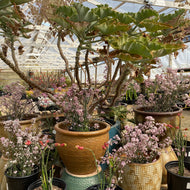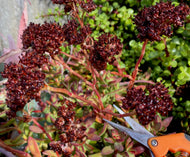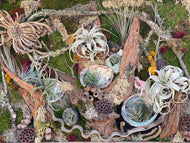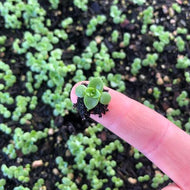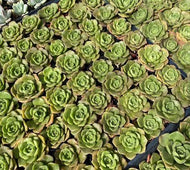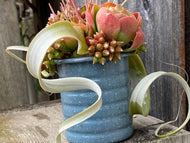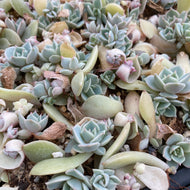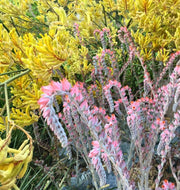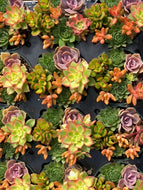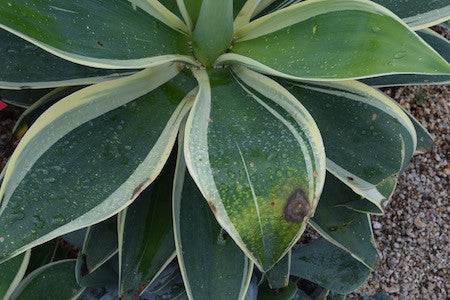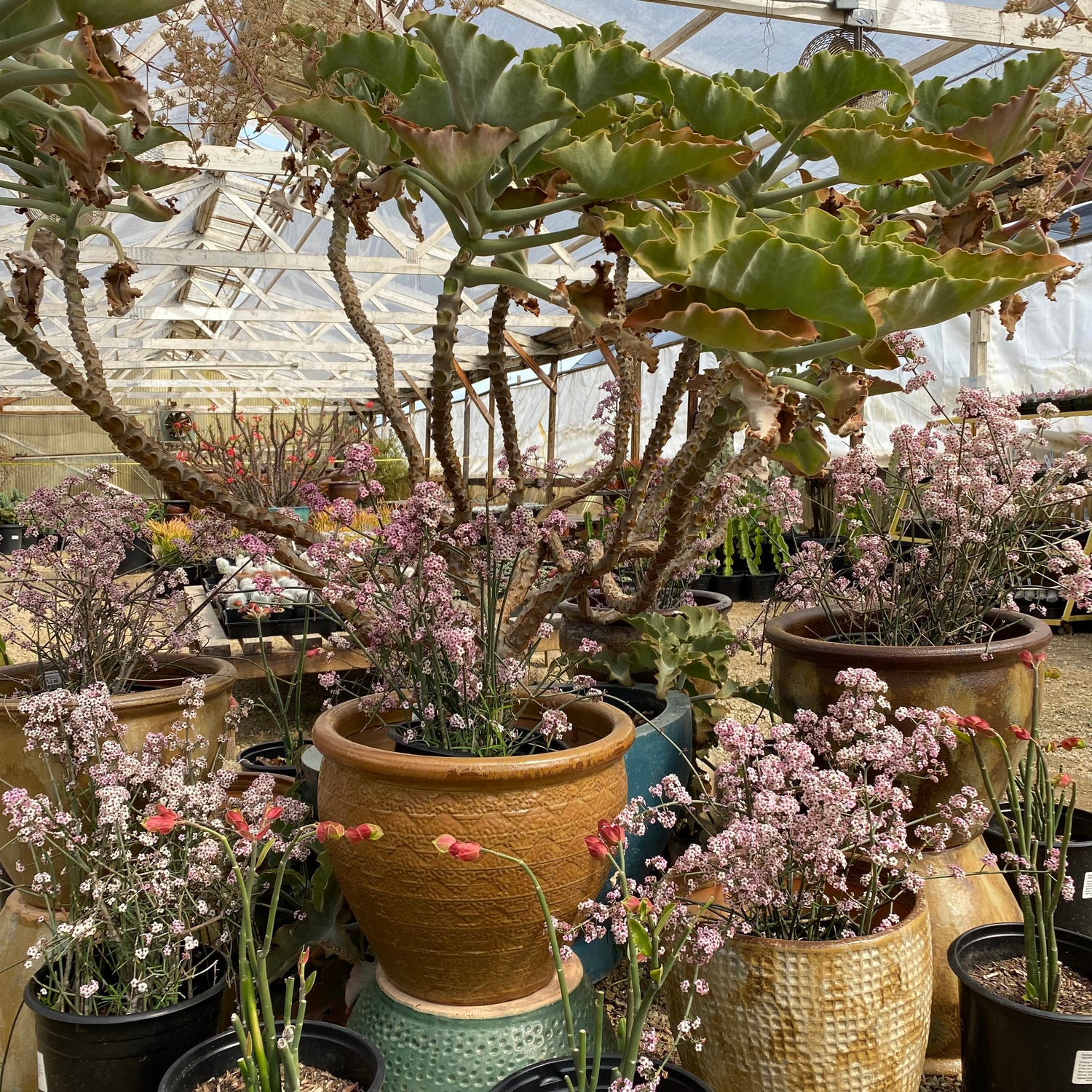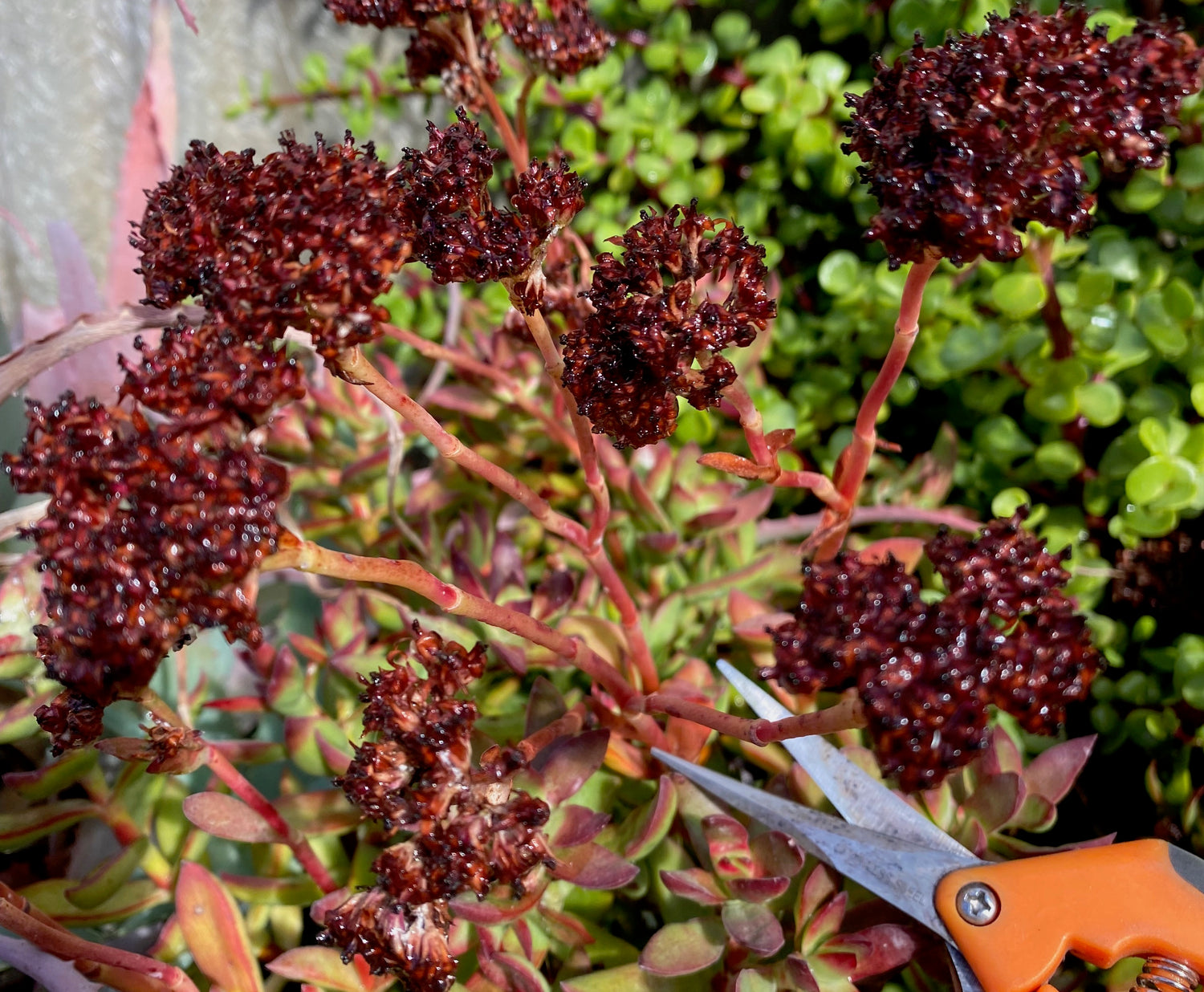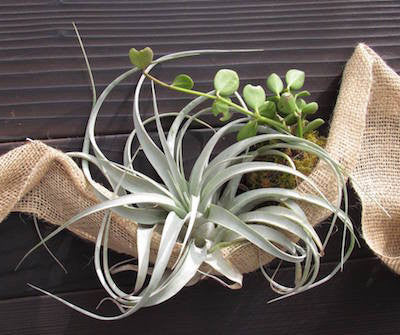Around the nursery, we have several species of Agave that create bulbils on their flower stalks. These new plants, sometimes called plantlets, grow from a bud at the base of the flower and are genetically identical to the mother plant. The longer they stay attached, the larger they grow. The bulbils will eventually drop off the flower stalk and potentially take root. Rather than waiting for them to drop off, it is easy to gently twist the bulbils off. A sharp knife can also be used to gently cut the baby plant off the stalk.
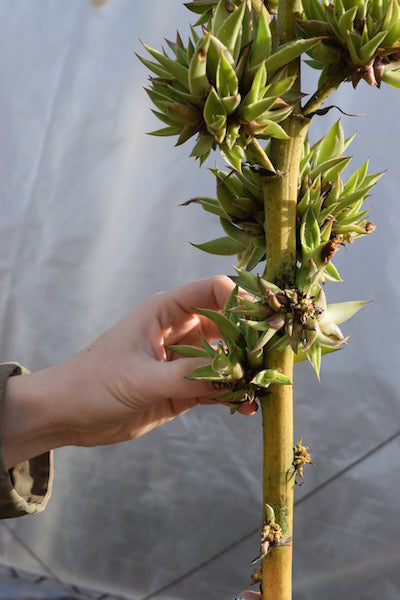
These plants often have roots already, ensuring propagation success. We let them scab over in a location with good airflow and diffuse light to reduce the opportunity for rot once the bulbil comes in contact with planting medium. Covering the soil with small rocks or gravel will also help the plants safely take root by keeping the crown clean and dry. As agave flowers can be quite tall (we had some upwards of 20’ this last year!) a crop of bulbils can result in more new plants than you might need for the garden!

We like harvesting bulbils for design projects as well as direct propagation. Bulbuls can resemble air plant and will stay fresh-looking for quite a while in many applications. They probably need even less care than an air plant, though eventually they will need to be planted in a soil medium in order to take root and grow. In projects where the roots have the opportunity to grow into moss, let them dry out between waterings much like you would treat a potted specimen. Keep an eye out for a shriveling "raisin" appearance on the leaves, or test the weight of your design to see if it is dry.
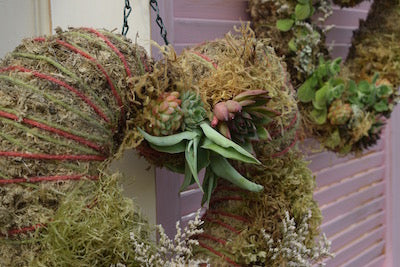
When pruning spent flowers off an Aloe this last week, we also discovered some bulbils had formed. This can be observed on other succulents such as Gastealoes and Echeveria.

These bulbils are different from "pups" that grow out from modified stems at the base of the plant, though both are genetic clones of the mother plant. Certain Agaves, Echeverias, and Sempervivum pup readily to produce a stand of multiple individuals. Even though the runners extending from the mother plants of some species can be quite long, the bulbils have the opportunity to travel even further away from the mother plant by dropping from the height of the bloom and tumbling away before eventually rooting.
“Stay tuned for updates as the Agave desmettiana variegata bulbils callous, and take root! We will be incorporating them in our designs next month!”

